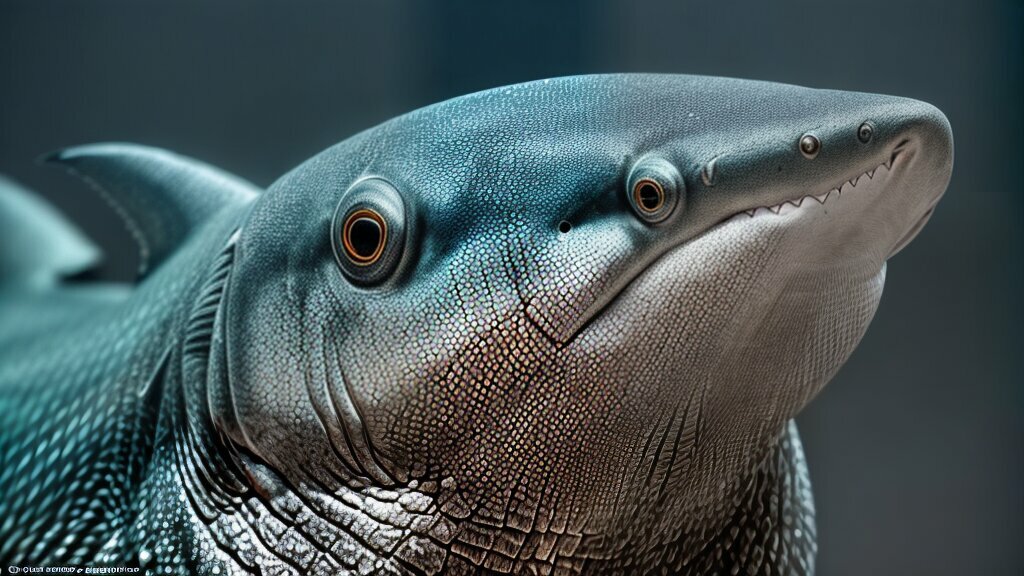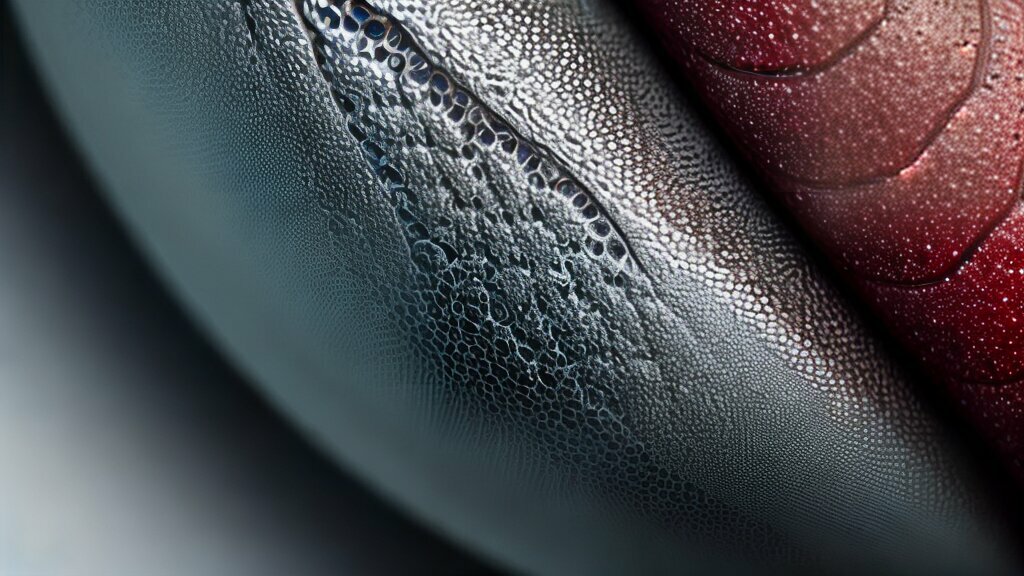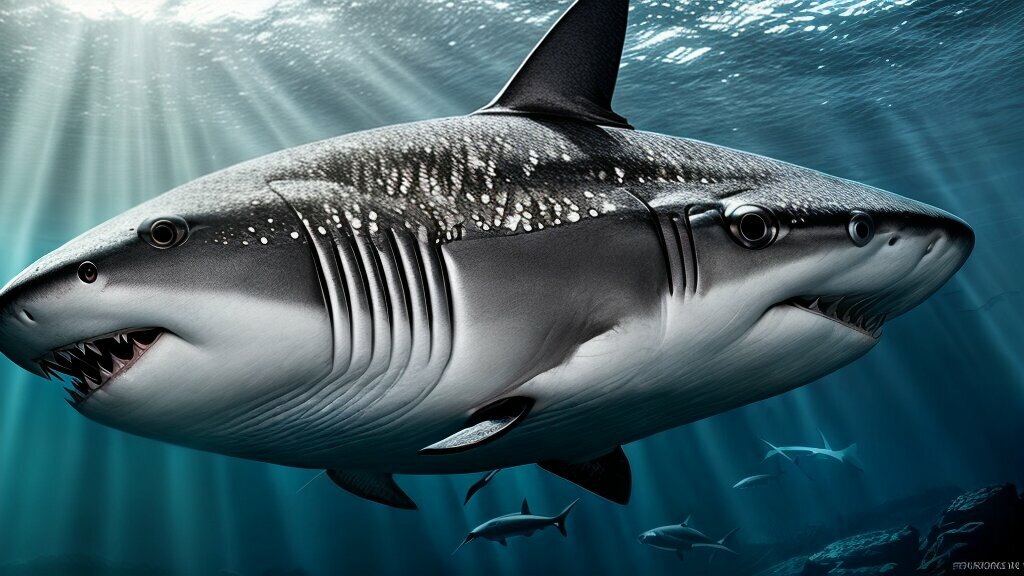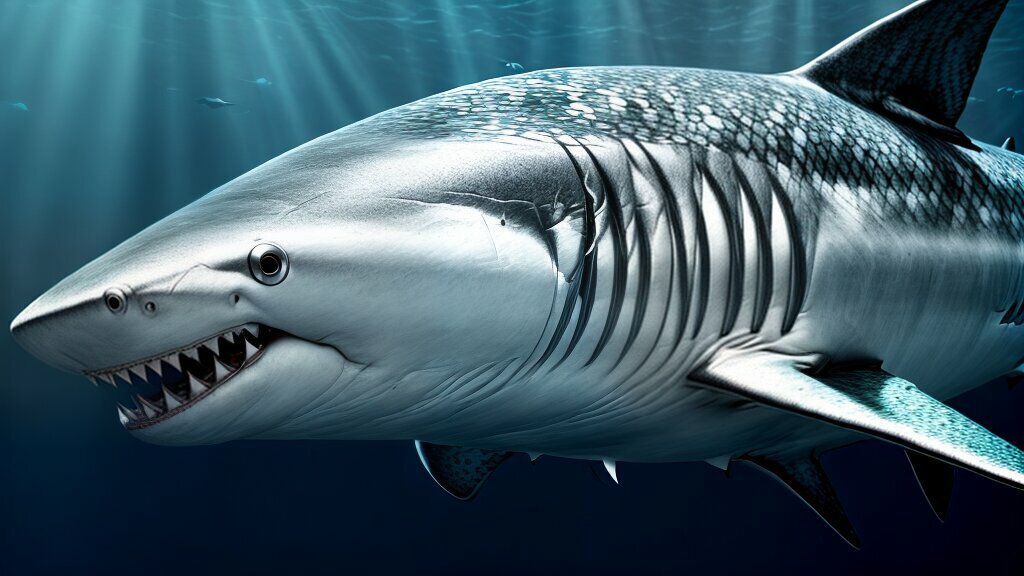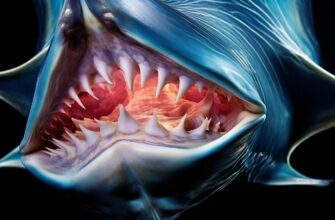Sharks are fascinating creatures. They are known for their sharp teeth, powerful jaws, and impressive swimming abilities. However, when it comes to their skin, there is a common misconception that they have smooth skin. But is this really the case? In this article, we’ll explore the texture of shark skin and uncover the surprising truth about its smoothness.
- Key Takeaways:
- The Myth of Smooth Shark Skin
- The Role of Dermal Denticles
- Hydrodynamic Advantages of Shark Skin
- Biomimicry and Shark Skin
- Shark Skin Variations
- The Surprising Truth About Shark Skin Texture
- The Importance of Dermal Denticles
- Applications in Science and Technology
- Variations in Texture
- FAQ
- Q: Is shark skin smooth?
- Q: What gives shark skin its texture?
- Q: How do dermal denticles contribute to the smoothness of shark skin?
- Q: What are the hydrodynamic advantages of shark skin?
- Q: How has shark skin texture influenced biomimicry?
- Q: Do different shark species have different skin textures?
Key Takeaways:
- The texture of shark skin has been a topic of debate for years.
- Shark skin is not smooth, but is covered in tiny, overlapping scales called dermal denticles.
- The texture of shark skin provides hydrodynamic advantages and has inspired technological advancements in various industries.
The Myth of Smooth Shark Skin
Many people believe that shark skin is smooth to the touch. However, this is a common misconception that fails to take into account the unique physical characteristics of shark skin.
One of the key features of shark skin is the presence of scales, known as dermal denticles, which cover the majority of their body. These scales are made of dentine and enamel and are arranged in a V-shaped pattern that protrudes from the skin’s surface.
Contrary to popular belief, these scales give shark skin a rough, sandpapery texture that can be felt when touched. This texture serves several important functions, including providing protection against parasites and helping to reduce drag in the water.
Moreover, shark skin contains tiny ridges that run parallel to their body, further increasing the roughness of their surface. These ridges, combined with the scales, create a unique texture that is unlike anything found in other aquatic animals.
Next time you see a shark swimming by, remember that its skin is anything but smooth.
The Role of Dermal Denticles
Shark skin texture is not just determined by the scales present on its surface. A key factor that contributes to the unique texture of shark skin is the presence of dermal denticles. These small structures are similar to teeth and can be found all over the surface of a shark’s skin.
The shape and arrangement of dermal denticles vary across different species of sharks. In some sharks, the denticles are closely packed together, while in others, they are more widely spaced. Additionally, the specific shape and orientation of the denticles can affect the texture of the skin.
Despite the presence of scales, the dermal denticles on shark skin give it a unique smoothness. The shape and arrangement of these structures minimize drag and turbulence, enabling sharks to swim faster and more efficiently. By reducing the amount of energy required for movement, shark skin texture is a key factor in their predatory success.
“This unique texture has inspired scientists to study and mimic its properties in various fields, such as aerospace, transportation, and sports.”
Hydrodynamic Advantages of Shark Skin
Shark skin texture is not only unique in its roughness but also provides the shark with hydrodynamic advantages. The scales and dermal denticles that make up shark skin create a surface that reduces drag and turbulence, allowing the shark to move through the water more efficiently.
Scientists have studied shark skin texture to understand these hydrodynamic properties and have found that mimicking it in technology can also lead to increased efficiency. For example, the aerospace industry has developed airplane wing designs based on shark skin texture, resulting in improved fuel efficiency and reduced noise during flight.
Similarly, shark skin-inspired textures have been applied to the hulls of boats and submarines, reducing drag and increasing speed. Even in sports, swimwear brands have incorporated shark skin-like textures to improve the performance of athletes in the water.
The unique texture of shark skin is truly remarkable and has applications in various fields, from transportation to sports. By studying its properties and mimicking them in technology, scientists have been able to create more efficient and sustainable designs.
Biomimicry and Shark Skin
Shark skin texture has captivated scientists and engineers for its unique properties, leading to the development of innovative technologies in various industries. One such example is biomimicry, the practice of drawing inspiration from nature to solve human problems.
The texture of shark skin has inspired the creation of specialized coatings for airplanes, allowing for smoother and more fuel-efficient flights. The transportation industry has also looked to shark skin for guiding the design of high-speed trains and enhancing wind turbine blades.
But perhaps the most well-known application of shark skin texture is in sports. Swimsuits designed with shark skin texture gained international attention during the Beijing Olympics, as athletes wearing them shattered world records. The texture’s ability to reduce drag and turbulence in water has also been applied to the design of golf balls and running shoes.
With its hydrodynamic advantages and unique texture, shark skin continues to inspire and inform a wide range of scientific and technological advancements.
Shark Skin Variations
While the texture of shark skin may be generally rough and abrasive, it is important to note that there are variations in texture across different shark species. One such example is the whale shark, which has a much smoother skin texture than other sharks. This can be attributed to its lack of dermal denticles, the small tooth-like structures that contribute to the roughness of shark skin.
On the other end of the spectrum, the skin of the sandpaper shark is particularly rough, with its dermal denticles resembling sandpaper. These variations in skin texture highlight the diversity within the shark family and showcase the complexity of their skin structures.
The Surprising Truth About Shark Skin Texture
So, is shark skin smooth or not? After examining the fascinating physical characteristics and properties of shark skin, we can safely say that the traditional notion of smoothness is a myth.
Contrary to popular belief, shark skin is not smooth at all. It is covered in scales that have a rough surface, providing the shark with an advantage in hydrodynamics. However, what makes shark skin texture truly unique is the presence of dermal denticles, small tooth-like structures that give it a velvety feel.
The Importance of Dermal Denticles
Dermal denticles play a crucial role in determining the texture of shark skin. These structures not only contribute to the overall smoothness but also provide protection and hydrodynamic advantages to the shark. By reducing drag and turbulence, shark skin allows the animal to swim faster and more efficiently, making it a marvel of evolution.
Applications in Science and Technology
The unique texture of shark skin has inspired scientists and engineers to develop innovative technologies. Biomimicry, the practice of emulating nature’s designs to solve human problems, has led to the creation of various products such as swimsuits, airplane wings, and even vehicles that can move underwater.
Variations in Texture
While all shark skin has a similar texture, there are variations across different species. Some sharks have rougher skin with larger scales, while others have smoother skin with smaller dermal denticles. These variations reflect the diversity within the shark family and further demonstrate the complexity of their skin texture.
In conclusion, shark skin is not smooth, but rather unique in its texture and properties. By understanding the physical characteristics and advantages of shark skin, we can gain insight into the marvels of nature and develop innovative solutions to human problems.
FAQ
Q: Is shark skin smooth?
A: Shark skin is not smooth. Contrary to popular belief, shark skin has a unique texture that is far from smooth.
Q: What gives shark skin its texture?
A: The texture of shark skin is determined by the presence of scales and dermal denticles, small tooth-like structures found on the skin.
Q: How do dermal denticles contribute to the smoothness of shark skin?
A: Dermal denticles help to reduce drag and turbulence, contributing to the overall smoothness of shark skin despite the presence of scales.
Q: What are the hydrodynamic advantages of shark skin?
A: Shark skin texture provides hydrodynamic advantages such as reduced drag and turbulence, enhancing the shark’s swimming abilities.
Q: How has shark skin texture influenced biomimicry?
A: Scientists have drawn inspiration from shark skin texture to develop innovative technologies in various industries, such as aerospace, transportation, and sports.
Q: Do different shark species have different skin textures?
A: Yes, shark skin texture can vary across different species, with some having rougher or smoother skin.


